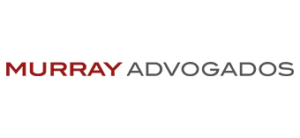IPCA rose 0.24% in June and 5.35% over 12 months, breaching continuous target system of 4.5%
07/10/2025
Brazil’s official inflation, as measured by the Extended Consumer Price Index (IPCA), rose 0.24% in June, slightly down from 0.26% in May, according to data released by the national statistics agency IBGE. While modest, it was the highest rate for the month of June since 2022, when inflation reached 0.67%.
The June figure came in above the median forecast of 0.19% from 33 financial institutions and consulting firms surveyed by Valor Data, Valor’s financial data provider. Forecasts ranged from 0.11% to 0.26%.
In the 12 months through June, inflation reached 5.35%, exceeding the upper limit of the Central Bank’s inflation target range for the first time since a new framework came into effect earlier this year. The current system sets a continuous target of 3%, with a tolerance band of 1.5% to 4.5%. If the 12-month IPCA remains outside this range for six consecutive months, the target is considered to have been breached.
Since January 2025, 12-month inflation has remained above the 4.5% ceiling. The June result marks the sixth consecutive month above the range, triggering a formal breach under the new rules set by the National Monetary Council (CMN).
Under the new framework, the Central Bank must now publish a semiannual open letter to the finance minister explaining the reasons for missing the target, the steps being taken to bring inflation back within the range, and the expected timeframe. The institution must also include a written explanation in its Monetary Policy Report, which replaces the previous Inflation Report published every quarter.
The inflation target system was revised to enhance predictability in monetary policy. Previously, the Central Bank aimed to meet an annual target based on end-of-year inflation. The shift to a continuous target requires the institution to manage inflation expectations more consistently over time.
For the 12-month figure, the median market expectation was 5.3%, according to Valor Data, with estimates ranging from 5.22% to 5.37%.
IBGE calculates the IPCA based on the consumption basket of households earning between one and 40 minimum wages, covering 10 metropolitan areas along with the cities of Goiânia, Campo Grande, Rio Branco, São Luís, Aracaju, and Brasília.
Price behavior by category
Of the nine spending categories used to calculate the index, five showed slower price increases in June compared to May. Food and beverages saw deflation of 0.18% in June after rising 0.17% the previous month. Slower inflation was also observed in housing (from 1.19% to 0.99%), health and personal care (from 0.54% to 0.07%), personal expenses (from 0.35% to 0.23%), and education (from 0.05% to zero).
On the other hand, price increases accelerated in household goods (from -0.27% to 0.08%), clothing (from 0.41% to 0.75%), transportation (from -0.37% to 0.27%), and communication (from 0.07% to 0.11%).
Diffusion and core inflation
Inflation became less widespread in June. The diffusion index, which tracks the share of goods and services with price increases, fell to 53.6% from 59.7% in May, according to Valor Data. Excluding food, which is among the most volatile categories, the index remained stable at 59.8%.
The average of the five core inflation measures tracked by the Central Bank slowed slightly to 0.29% in June from 0.30% in May, according to MCM Consultores. Over the 12-month period, the average of the core indexes rose to 5.23% from 5.17%.
By Lucianne Carneiro
Source: Valor International
https://valorinternational.globo.com/
